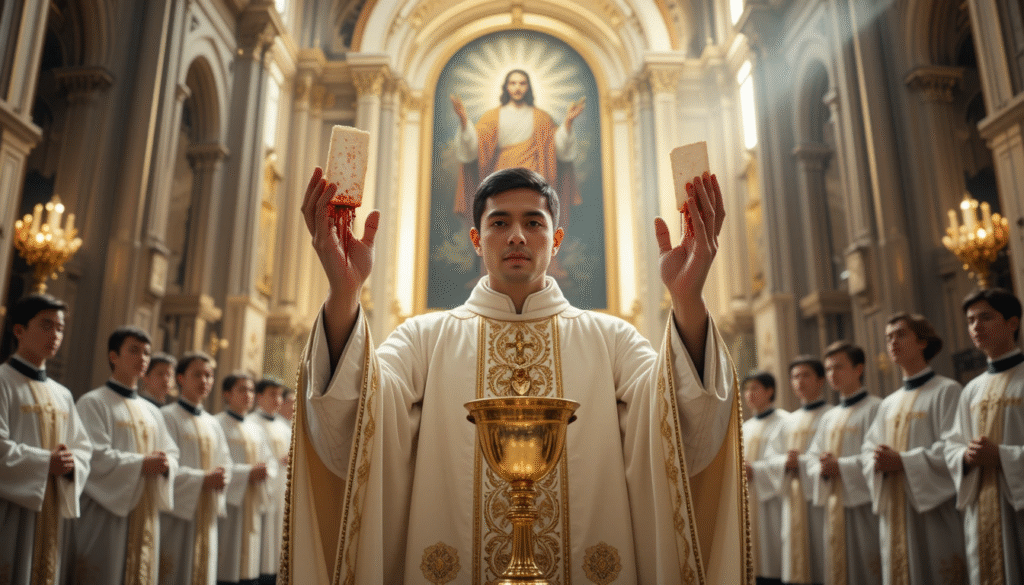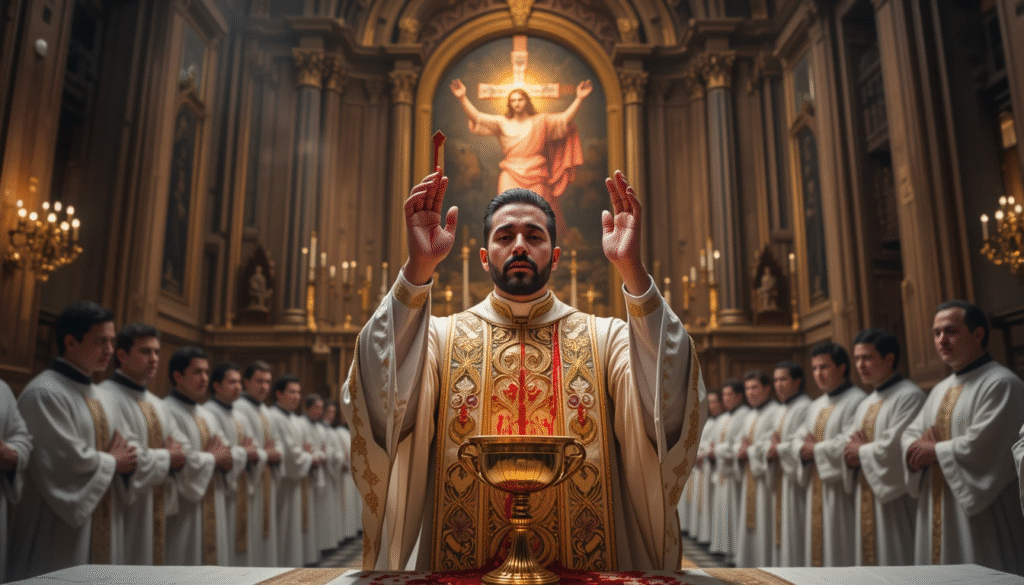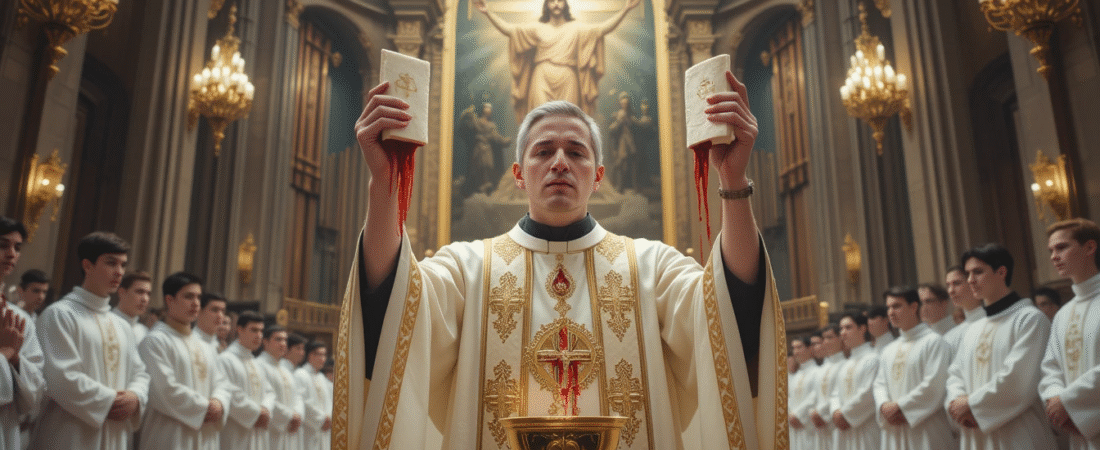Corpus Christi is a Christian feast that honors the real presence of the body of Jesus Christ in the Eucharist. The name “Corpus Christi” is Latin for “Body of Christ.” It’s one of the most sacred feasts in the Catholic liturgical calendar, deeply rooted in both tradition and doctrine.
This celebration does not focus on a single biblical event. Instead, it emphasizes a central truth of the Christian faith — that Christ is truly present in the consecrated bread and wine of the Holy Communion. The feast often includes processions, prayers, hymns, and acts of devotion that remind believers of this mystery.
Corpus Christi provides Christians with a visible, public way to proclaim their belief in Jesus’ real presence. It highlights the power of the Eucharist and reaffirms its central place in Christian life. Many churches decorate streets with flower carpets, banners, and altars for outdoor processions.
The feast is observed on the Thursday after Trinity Sunday or on the following Sunday in many regions. It brings together communities for public worship, reinforcing the unity and shared faith of believers. Corpus Christi is not merely a religious event — it’s an expression of faith lived out in public witness.
Understanding the Corpus Christi Celebration
The celebration of Corpus Christi centers around the Eucharist, where believers acknowledge the body of Christ made present under the appearance of bread. The day is marked by Mass, followed by a solemn procession of the Blessed Sacrament.
The feast was officially instituted in the 13th century by Pope Urban IV. It came in response to the growing devotion to the real presence of Christ in the Eucharist. The pope commissioned the theologian St. Thomas Aquinas to compose prayers and hymns specifically for this celebration, many of which are still used today.
During the procession, the consecrated host is carried in a monstrance through the streets. Participants sing hymns, recite prayers, and often stop at temporary altars set up along the route. This act represents Christ’s journey among His people and invites the faithful to follow Him in their daily lives.
For Catholics, Corpus Christi deepens the understanding of the Eucharist’s role. It’s not just a ritual but a divine encounter. The physical movement of the procession reflects the movement of faith from the altar to the world, urging Christians to bring Christ to every part of their lives.
In places where Catholicism has strong cultural roots, Corpus Christi becomes a major public event, integrating religion with local tradition and celebration. Its impact is both spiritual and communal.
The Origin and History of Corpus Christi
The feast of Corpus Christi traces its roots to the 13th century, though its theological foundations go back to the Last Supper. The idea of a special feast honoring the Eucharist was first proposed by St. Juliana of Liège, a Belgian nun who had visions of Christ asking for such a celebration.
Her devotion led to the establishment of the feast in the Diocese of Liège around 1246. With the support of Church leaders and later a Eucharistic miracle in Bolsena, Pope Urban IV made Corpus Christi a universal feast in 1264 through the papal bull Transiturus de hoc mundo.
The miracle at Bolsena — where a consecrated host reportedly bled on a corporal — played a significant role in affirming belief in the real presence. It convinced skeptics and added weight to the decision for a global observance.
Over time, Corpus Christi became an occasion not just for liturgy but for art, music, and dramatic public displays of faith. Medieval towns organized plays and processions, using the feast as both spiritual practice and cultural celebration.
Though its origin is Catholic, the core message of Corpus Christi — honoring Christ’s presence in the Eucharist — holds importance for many Christian denominations. Its longevity and widespread observance point to a lasting hunger for tangible expressions of faith.
How Corpus Christi Is Celebrated Worldwide

Corpus Christi is observed in diverse ways across the globe. In many Catholic-majority countries, it’s a public holiday marked by elaborate rituals and processions.
In Spain and Portugal, cities like Toledo and Lisbon turn the streets into sacred spaces. Flower carpets, incense, and medieval pageantry accompany the Eucharist. In Latin America, indigenous traditions blend with Catholic symbolism to create colorful, vibrant festivals.
Poland is known for massive outdoor celebrations where families participate in faith-led parades. The Philippines hosts solemn Masses and public adoration that last for hours. Meanwhile, in parts of the United States, Catholic parishes organize neighborhood processions that bring communities together.
Each celebration follows the same core theme — honoring the body of Christ — but reflects unique cultural identities. In urban areas, celebrations may be simplified yet still reverent, while rural communities often preserve older, more elaborate customs.
Corpus Christi in Catholic Tradition
In Catholic teaching, Corpus Christi is linked directly to the doctrine of transubstantiation — the belief that the bread and wine become the actual body and blood of Christ during Mass.
This feast allows Catholics to publicly profess their faith in this mystery. The use of a monstrance in the procession elevates the Eucharist, showing it is not just symbolic but sacred and real.
Catholic liturgies on Corpus Christi are often more festive, incorporating incense, bells, and extended homilies that explain the importance of the Eucharist. Some churches hold 40-hour devotions or Benediction services in connection with the feast.
Modern-Day Observances and Symbols
Even in places where public processions are limited, modern-day observances include Eucharistic adoration, prayer vigils, and spiritual reflections on the sacrament.
Symbols like the host, chalice, and monstrance remain central. Digital platforms now also feature livestreams of Corpus Christi Masses, making participation more accessible.
Youth ministries and parish groups often organize teachings on the meaning of the feast, helping younger generations understand and value the real presence of Christ in the Eucharist.
The Spiritual Significance of the Feast of Corpus Christi

The heart of Corpus Christi is spiritual intimacy. It reminds believers that Christ is not distant but near — physically present in the Eucharist.
This feast calls Christians to reflect on the power of communion. Every time the Eucharist is received, it renews the believer’s union with Christ and with the wider Church.
It also teaches about sacrifice. The Eucharist is a continual reminder of Jesus’ sacrifice on the cross. On Corpus Christi, this sacrifice is honored with greater attention and gratitude.
Spiritual renewal often follows the celebration. People are encouraged to receive the Eucharist reverently and to deepen their prayer life. The feast becomes a moment of recommitment to faith.
Christians of all ages are invited to open their hearts to the divine mystery. The Eucharist is not just a sacred meal — it’s an encounter with the living God, and Corpus Christi magnifies that truth.
Why Corpus Christi Still Matters Today
In a world of distractions and division, Corpus Christi is a call to unity and devotion. It pulls attention back to what matters — the presence of Christ and the call to live like Him.
The feast challenges believers to bring Christ beyond the walls of the church. Whether through acts of service, prayer, or witness, the body of Christ continues His mission through His people.
Today, when many question the sacred or reduce worship to routine, Corpus Christi proclaims that the divine still enters the physical. The bread and wine become more than food — they become life.
This feast isn’t only for clergy or scholars. It’s for every believer, reminding each one of their place in God’s plan and their need for spiritual nourishment.
By honoring the body of Christ, the Church renews itself. Through Corpus Christi, faith moves from the altar to the streets — and into the heart of every person willing to believe.
You can also read more about our well written biblical insights here :
Insights.
Also, get a hard copy of bible here.
